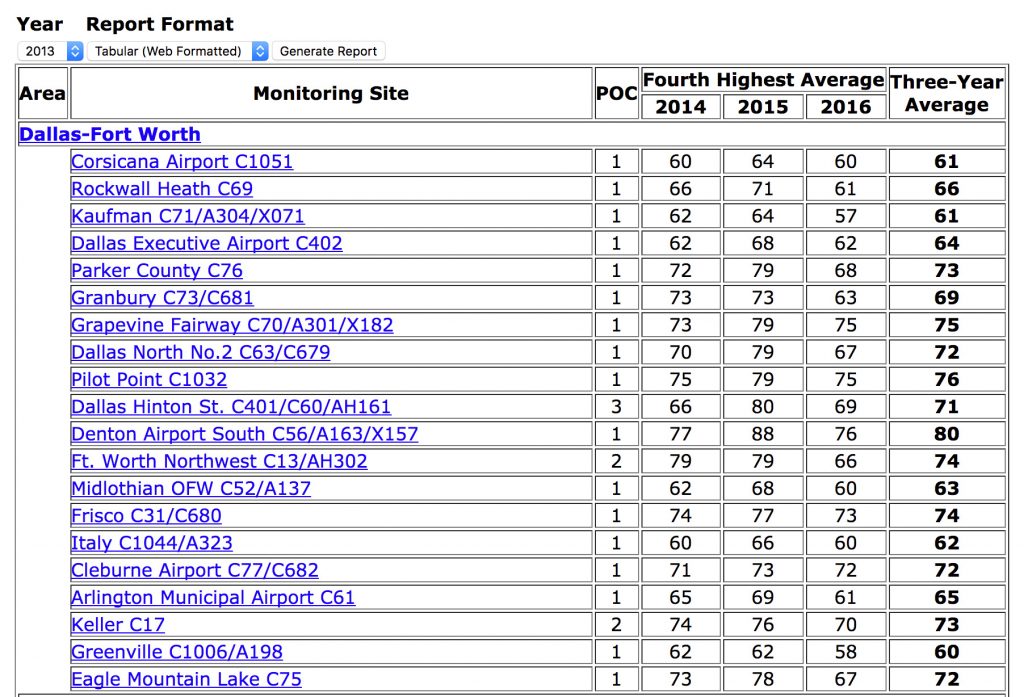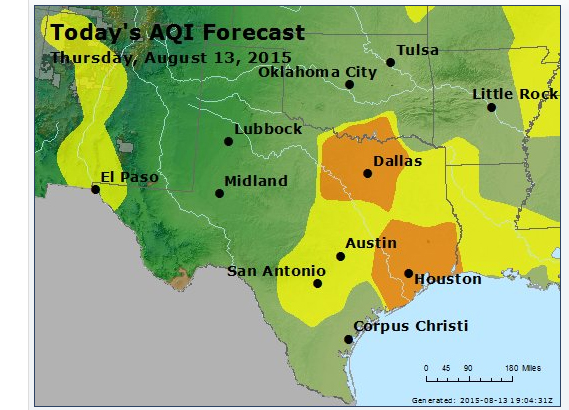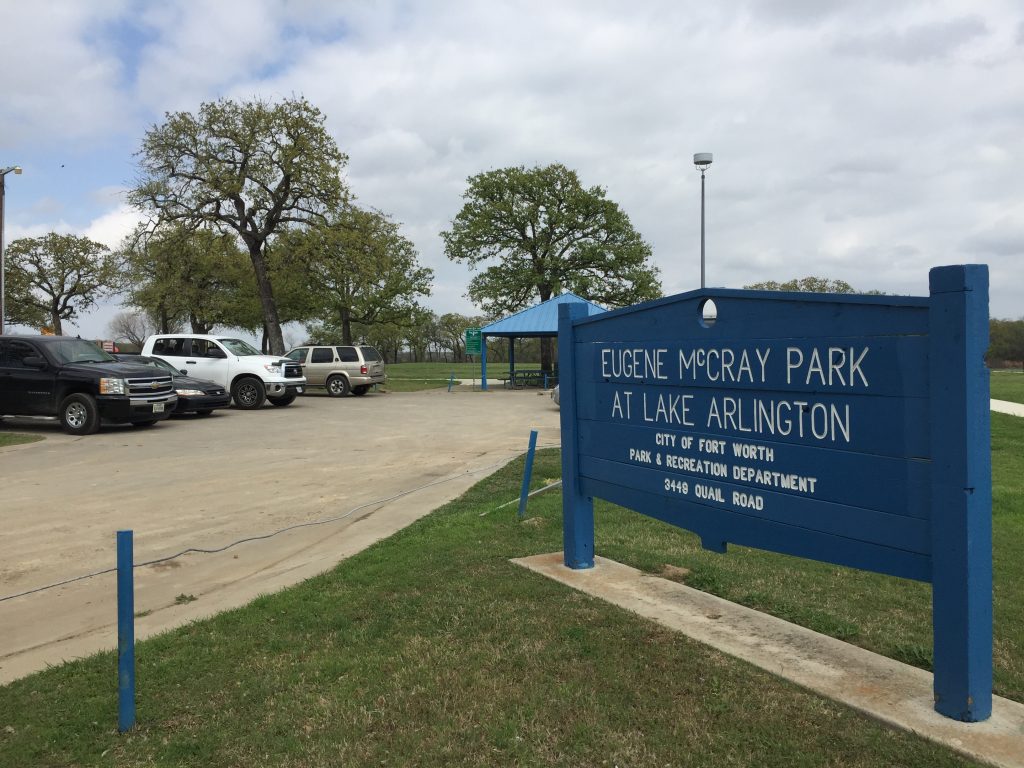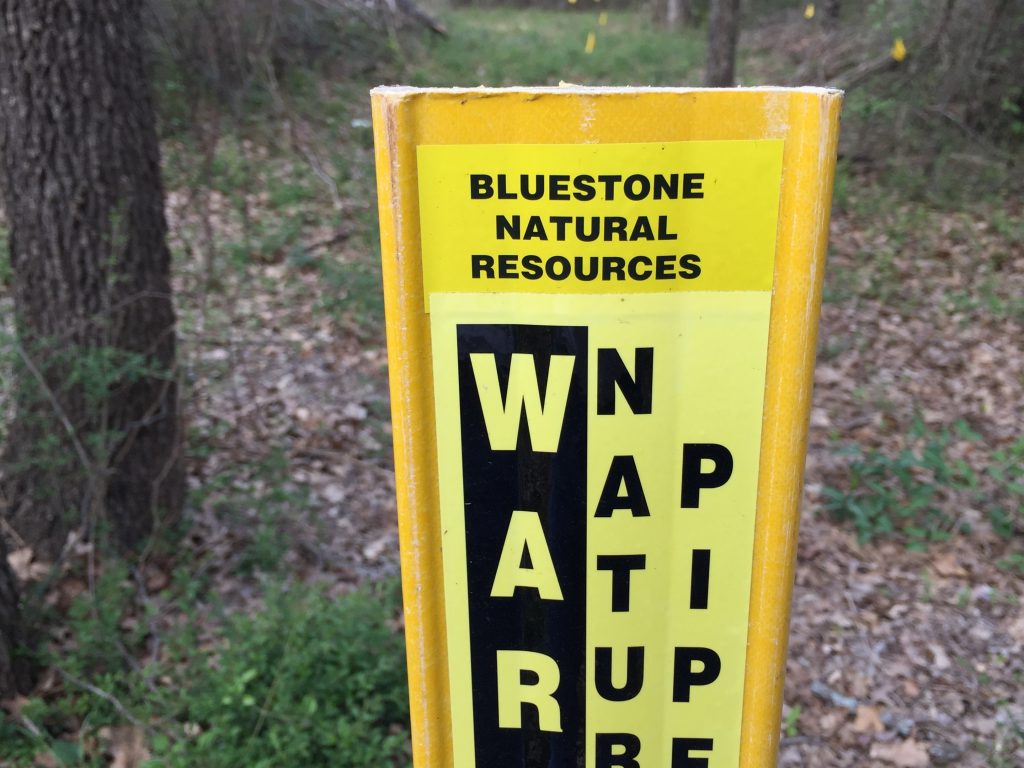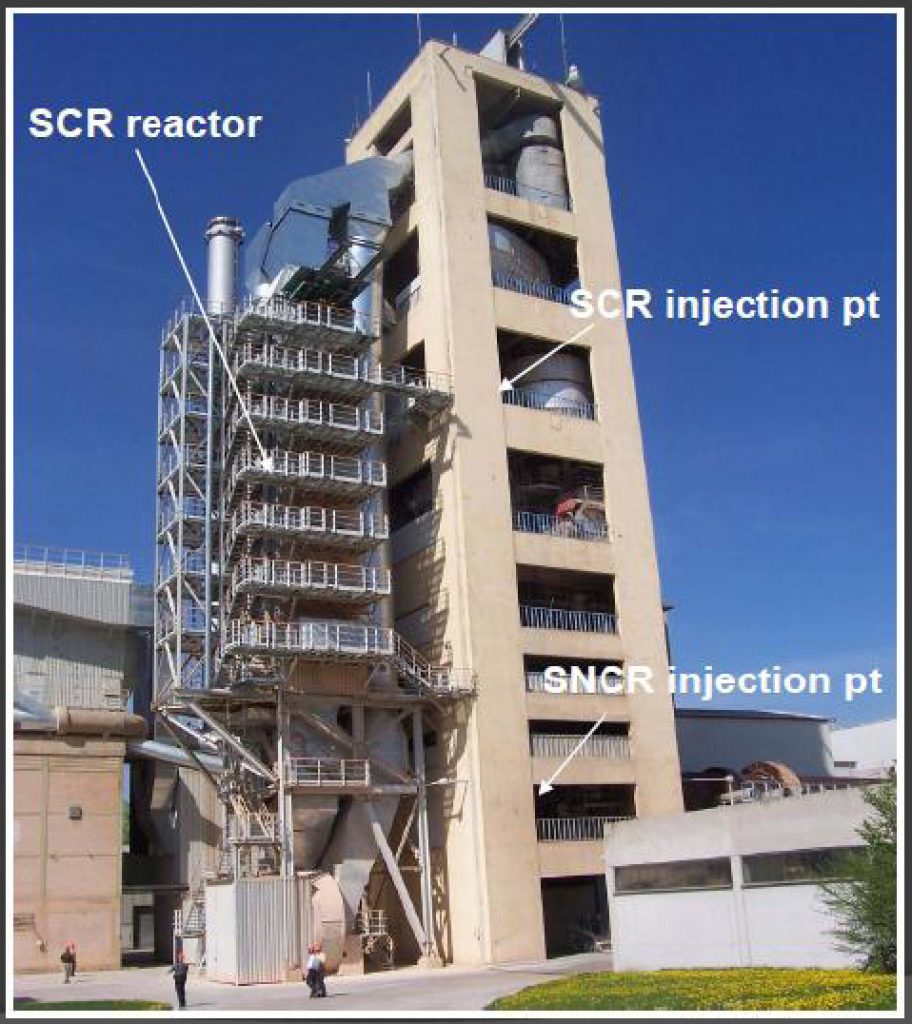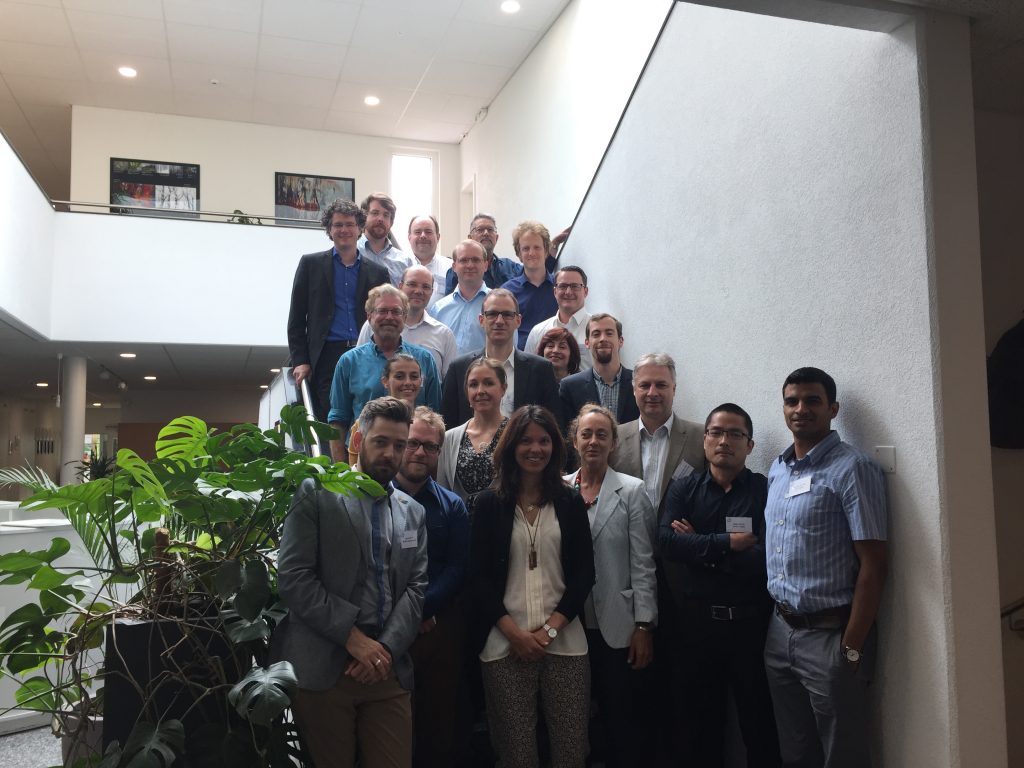Air Quality
Have You Seen Me? The Missing DFW Clean Air Plan
 Somewhere deep in the cubicled bowels of the Region 6 EPA offices in downtown Dallas lies a draft of a letter to the State of Texas telling Austin it’s proposed clean air plan for DFW is inadequate and must be re-written.
Somewhere deep in the cubicled bowels of the Region 6 EPA offices in downtown Dallas lies a draft of a letter to the State of Texas telling Austin it’s proposed clean air plan for DFW is inadequate and must be re-written.
It likely goes through the litany of well-known public objections the EPA has about the plan, originally expressed while it was being drafted by the Texas Commission on Environmental Quality:
- The state’s computer air modeling’s predictions of drops in pollution are “unrealistic.”
- The state’s plan doesn’t do anything about pollution from the old East Texas coal plants despite evidence “strongly supporting” the link between their poisons and DFW smog.
- Air quality monitors in the gas patch are lagging behind other DFW area monitors in showing decreases in smog over the last decade, indicating pollution from gas patch facilities is slowing air quality progress, but the state’s plan doesn’t reduce it either.
- Despite a brand new state-of-the-art pollution control system that could cut smog pollution by 70-90% being voluntarily installed at one cement kiln in Midlothian, the state is not requiring the other three kilns install the same technology.
Which is all longhand for “this plan is not cutting enough air pollution to work.”
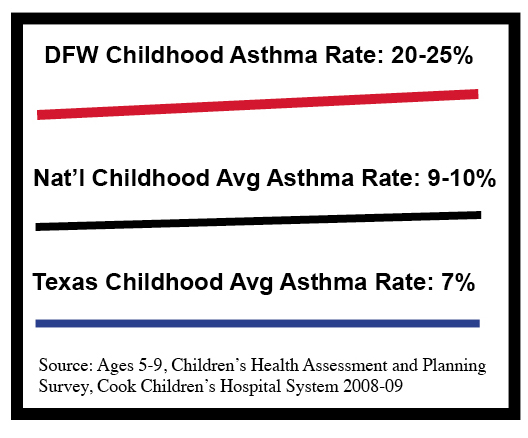 The current standard for smog, or ozone pollution, is 75 parts per billion over an eight hour period. That’s supposed to come down to 70 in the next few years as a new, more protective federal standard is applied.
The current standard for smog, or ozone pollution, is 75 parts per billion over an eight hour period. That’s supposed to come down to 70 in the next few years as a new, more protective federal standard is applied.
DFW’s eight hour average is 80 parts per billion at the start of this “ozone season.” (based on the numbers coming out of the Denton air quality monitor) The North Texas region has never been in compliance with the smog standard, even when it was 120 parts per billion over just an hour. That’s 26 years of bad air and counting.
The state’s plan is supposed to be response to this problem, but for the second time in a row, Texas has written an air plan for DFW that does nothing at all.
Before November, that plan was going to be rejected, in part, or whole, as insufficient by EPA, sent back to Austin for a re-write and then, fingers crossed, Downwinders and others were hoping to persuade the Agency to substitute its own federal plan of action. That would have been a first for DFW.
In December, Dallas County Commissioner Dr. Theresa Daniel, Dallas Council member Sandy Greyson, Dallas Mayor Mike Rawlings, staff representing Congresswoman Eddie Bernice Johnson and Congressman Marc Veasey, members of the Dallas County Medical Society and Downwinders members all pleaded with EPA Regional Administrator Ron Curry to try and persuade him to reject the state plan and implement a federal one before Inauguration Day.
Curry’s response was to say that timeline was too fast – despite having had the state plan in-house at EPA for over a year, and access to its conclusion for even longer. Plus, he said reassuringly, they’d all gone through “transitions” from one administration to another. Everything would be all right.
Donald Trump will not be able to revive the coal industry. He will not be able to revoke President Obama’s climate change policies en masse without court fights. Meta national and international trends are beyond his gutted EPA’s reach to impact. But he can keep seven million DFW residents from breathing safe and legal air for the next decade.
Right now, the state clean air plan for DFW is still parked at EPA. Because of the change in administrations, the staff is probably being told to do the math twice and make only the most conservative calls. That may mean rejecting only certain parts of the plan, albeit critical ones, like the section that promises to get down to 75 ppb by the end of this summer.
Yes, that was the original goal of the plan way back when it started being put together in 2014-15. If we have another cooler, wetter summer it’s possible we could get close. If we have a typical DFW summer, the smog might get worse, as it did the last time a state clean air plan that did nothing was being implemented in 2011.
Besides rejecting the “attainment” part of the attainment plan, the EPA could also reject the way the state defined new control technologies as impractical or too costly despite being widely used in industry. One example is electrification of compressors in the gas patch. Even the gas and oil’s industry’s own textbooks cite this one simple switch in power sources, from diesel or gas to electricity to power huge, locomotive size pipeline compressors, as being the standard fix in metropolitan areas with bad air.
But the state’s rejecting requiring electrification because it says it just isn’t practical to expect that those compressors can find power close enough to the grid to plug-in….in the fourth largest urban area in the country.
Another example are the three Midlothian cement plants, still the single largest sources of air pollution in DFW.
One cement plant operator has voluntarily installed what’s considered to be a state-of-the art pollution control system that’s capable of reducing smog-forming emissions by 70-90%. This system is also being used with great effect in Europe on almost a dozen plants. But the state’s plan doesn’t take note of this sea-change in technology and doesn’t require the other three cement plants in Midlothian to install it, saying it hasn’t been proven yet – even though it’s in full scale operation in a Texas cement kiln right now.
But while the local EPA staff may have felt more confident about making those calls on new pollution controls in a Clinton administration, it’s unlikely they’ll advocate for them now, knowing their new bosses in DC will not approve.
So they’ll put a big’ ol “REJECT” stamp on the state’s paperwork and and send it back to Austin for a redo.
From where it will never see the light of day again.
Officially, when the EPA rejects a state clean air plan, it triggers a two-year deadline to come up with another one. So normally, the state would go through the motions and eventually churn out another plan, it would be found inadequate by EPA again, the whole thing would wind up in court and either the EPA and/or environmentalists would win some concessions.
But the EPA is transitioning from one smog standard to another. There’s a gap in enforcement of the old standard to get ready for the new one. So the State of Texas, which hasn’t even tried to write a serious clean air plan in decade, and doesn’t even believe smog is bad for you, will get a Mulligan from the EPA for not being able to produce a clean air plan for DFW that works.
Not only will the state of Texas not be penalized for writing an ineffective clean air plan, but if DFW is still not in compliance with the older 75 ppb smog standard by the end of this summer, it won’t be penalized for that either. Because now the EPA is switching over to the 70 ppb standard – and there are brand new deadlines for brand new clean air plans….for the State of Texas to willfully ignore.
Greg Abbott will not be punished for ignoring the law. The Texas Legislature will not be punished. Nobody at TCEQ will pay a price for once again not doing their job.
No, the only people being punished for the state’s aggressive neglect of its air are DFW’s residents, who must breathe the results of that neglect for almost half of every year now. Make no mistake about it, it’s a statistical certainty that neglect is killing people and making them sick. Dr. Robert Haley’s landmark study using the state and EPA’s own data shows that number could be as high as 100 victims a year.
Now add a Trump EPA to the mix.
DFW is not in compliance with the current/old 75 ppb smog standard. The Texas plan to get it in compliance is inadequate. The leftover Obama EPA will say so and send it back to Austin. The state will sit on the plan six months, then resubmit it. A Trump EPA will now find this previously inadequate plan quite adequate, even if the region still isn’t in compliance with the old standard.
But wait, there’s more.
You’d think a region in continual non-compliance with the Clean Air Act for almost three decades would be a priority for receiving an effective clean air plan. You’d be wrong.
In fact, since DFW average is currently 80 ppb of smog, and not 81 ppb, the state of Texas does not even have to submit a clean air plan for DFW until AFTER the region fails to meet the new 70 ppb standard by 2020, at which point Texas will have two more years to write another plan that does nothing.
This is how 80,000 votes spread over three Midwestern states can poison the air for seven million Texans.
The one thing that could throw a wrench into this scenario? Court cases filed by environmentalists to make sure EPA doesn’t allow backsliding in DFW air quality. But that is a very thin green line on which your lungs can pin hope, and it will always be after the barn door has already been left for too long.
We’ve gone from being on the precipice of what would have been the first real pollution reduction plan for DFW in a decade, to now looking at a decade of no action at all outside that which we can generate as citizens defending ourselves. In 2017, Environmental protection in Texas is very much a Do-It-Yourself proposition.
As the region’s only group charged with the job of protecting our air, Downwinders is looking at starting from scratch and reassessing our strategy. We have to find new ways to leverage our need for safe and legal air. We worked hard for over three years to win a good air plan. Now it’s back to the drawing boards.
One of the things we’re putting a lot of effort and money into building is our own independent air quality monitoring network. There are only 20 smog monitors for all of North Texas, half of which are used in rural areas for boundary readings. There are no smog monitors in Wise County, despite all the computer models showing it to be where the highest levels of the pollution are probably located.
If we can do a better job of documenting bad air, we make the case for why we need more actions to reduce air pollution, instead of do-nothing plans from Austin.
“This is the Black Side of Lake Arlington.” Why the BlueStone fracking waste injection well fight is also an Environmental Justice fight
By now you might have heard about the new fracking waste injection well being sought by BlueStone Corporation on the shores of Lake Arlington, the source of drinking water to hundreds of thousands of Arlington residents as well as the cities of Bedford, Colleyville, Euless, Grapevine, and North Richland Hills.
You may know it’s being proposed with a straight face near the Lake Arlington dam, and presents a direct challenge to the municipal bans on such wells that both Fort Worth and Arlington have passed.
But did you know there’s a lakeside public park that’s a longtime social and recreational hot spot for Fort Worth’s Black community just hundreds of feet away? Did you know there are Stop Six residents living adjacent to the proposed well site?
You’d never guess it from the view most of us get out of our cars buzzing by the East Berry exit on Loop 820. Nor can you find it on any of your Internet navigation maps. That’s right, it’s a park and neighborhood so unknown, even Google can’t find it.
But drop by Eugene McCray Park any given weekend and you’ll see a large slice of older Fort Worth black culture, with lots of fishing rods, lawn chairs, and baking brisket. “This is the Black Side of Lake Arlington” says an older gentleman sitting on his tailgate, and a panoramic look around confirms his judgement.
Smaller children energetically utilize the top-o-the-hill playground, older kids and their parents fish from the shoreline, others out in all varieties of boats come and go from the park’s ramp, birthday and anniversary parties roar with laughter from the covered pavilions, customized grills and recipes are carefully tended, dominos are slapped down hard on the cement tables, all surrounded by fresh spring greenery and the lapping waters of the lake. You can watch a heron swallowing a snack, or florescent-necked ducks swimming the small bay that shoulders the park. It’s one giant African-American Norman Rockwall painting. On this March spring day, it’s as though Stop Six has its own miniature all-black Eden in the middle of DFW that no white person can even guess is here.
 But less than a quarter-mile mile south along this idyllic lake shore is where the BlueStone corporation wants to start disposing of a million and a half gallons of fracking waste a day – in direct violation of a Fort Worth ordinance that says you can’t do that. It’s also the first real challenge to the stalemate frozen in place by 2015’s state law HB40, reining-in the power of cities to regulate oil and gas facilities within their own city limits.
But less than a quarter-mile mile south along this idyllic lake shore is where the BlueStone corporation wants to start disposing of a million and a half gallons of fracking waste a day – in direct violation of a Fort Worth ordinance that says you can’t do that. It’s also the first real challenge to the stalemate frozen in place by 2015’s state law HB40, reining-in the power of cities to regulate oil and gas facilities within their own city limits.
On either side of the well site, neighborhoods are squeezed between 820 and the lake with a mix of low and middle-income renters and homeowners, small lots with gardens, and older ranchettes with horse stalls and chicken coops. McCray Park is their backyard.
Last year BlueStone inherited thousands of local gas wells from belly-up Quicksilver Energy. Right now, the wastes from those wells goes outside the city limits to injection waste wells in other parts of North Texas – places that have had their own problems with their continued operation (like earthquakes, which makes putting a new one by a large dam seem like a bad idea, but we digress….)
But if it had to have a new well – and there’s no proof it did – BlueStone had the pick of any area in Tarrant County or Fort Worth to site this new facility. Nothing in the quotes from the company so far indicate this Stop Six site is an especially strategic or convenient location to ship the wastes from those Quicksilver wells.
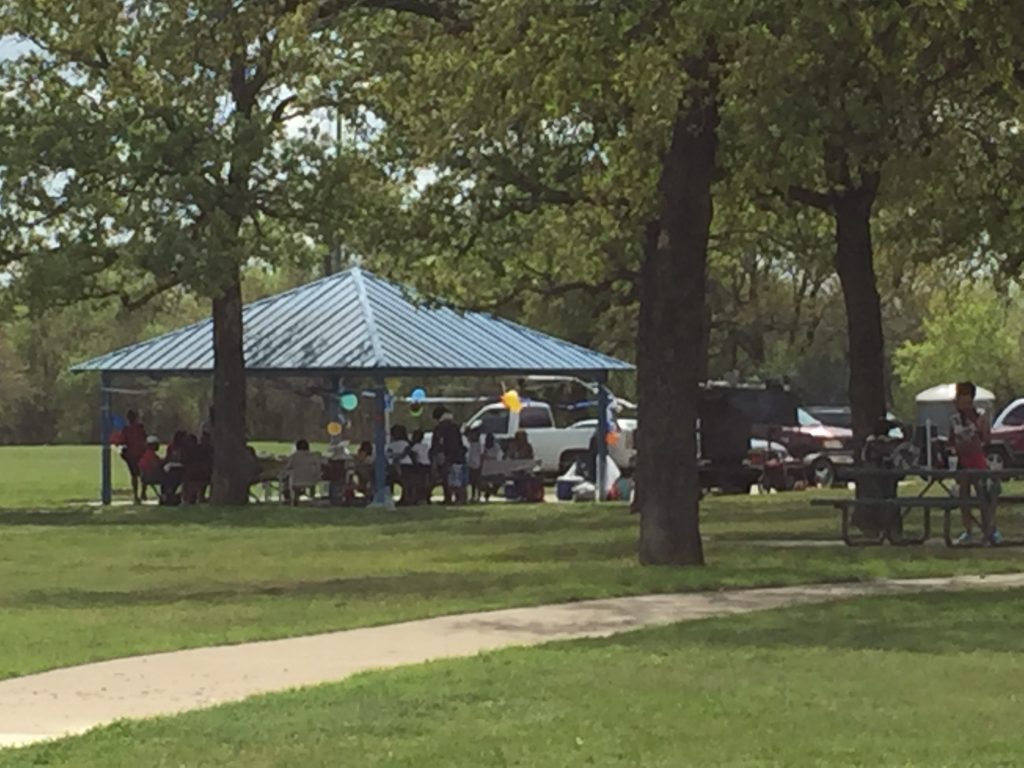 But something about this Stop Six neighborhood does make it a desirable target for a company like BlueStone: It’s predominantly minority and doesn’t have a lot of money to fight back.
But something about this Stop Six neighborhood does make it a desirable target for a company like BlueStone: It’s predominantly minority and doesn’t have a lot of money to fight back.
Does anyone who already has experience in these matters believe it was only coincidence that drove BlueStone to pick this Stop Six site, instead of say, somewhere on the tonier west side? That’s what makes this fight an environmental justice fight along with everything else.
BlueStone has said that its well will only be used for its “nearby” operations. But those operations only produce about half a million gallons of waste a day. Why do they need a permit that allows for disposing of three times that amount? It’s not unusual for a waste well to get a permit under the guise of exclusive use, only to amend the permit a short time later to allow all comers – and charge a nice profit. It also makes it a lot easier to flip in hard times. Unless there’s a deed restriction on this operation, this Lake Arlington site could end up the same way, and the industrial use will overwhelm everything else. The inner-city Black Eden will be gone.
When Downwinders’ staff visited this last weekend, not a lot of the park users were aware of what was taking place just on the other side of the tree line. Given the history and stature of the park – it’s named after a black former city council member and is due to headline new bike and hike trails along the Lake’s west shore – there’s potential for a lot of good organizing in Fort Worth’s black community, and Stop Six in particular, by well opponents. This is as blatant and combustible a combination of race and pollution as recent Barnett Shale Gas Wars have produced.
The area is represented by Fort Worth City Council Member Gyna Bivens, who’s already voted to fight the Bluestone permit, State Representative Nicole Collier, who voted against HB 40 in 2015, and State Senator Konni Burton, a Republican who voted for HB40 while praising Fort Worth’s gas ordinance as a model to be duplicated. That would be the same ordinance now under attack from Bluestone’s pursuit of the well site by Eugene McCray Park.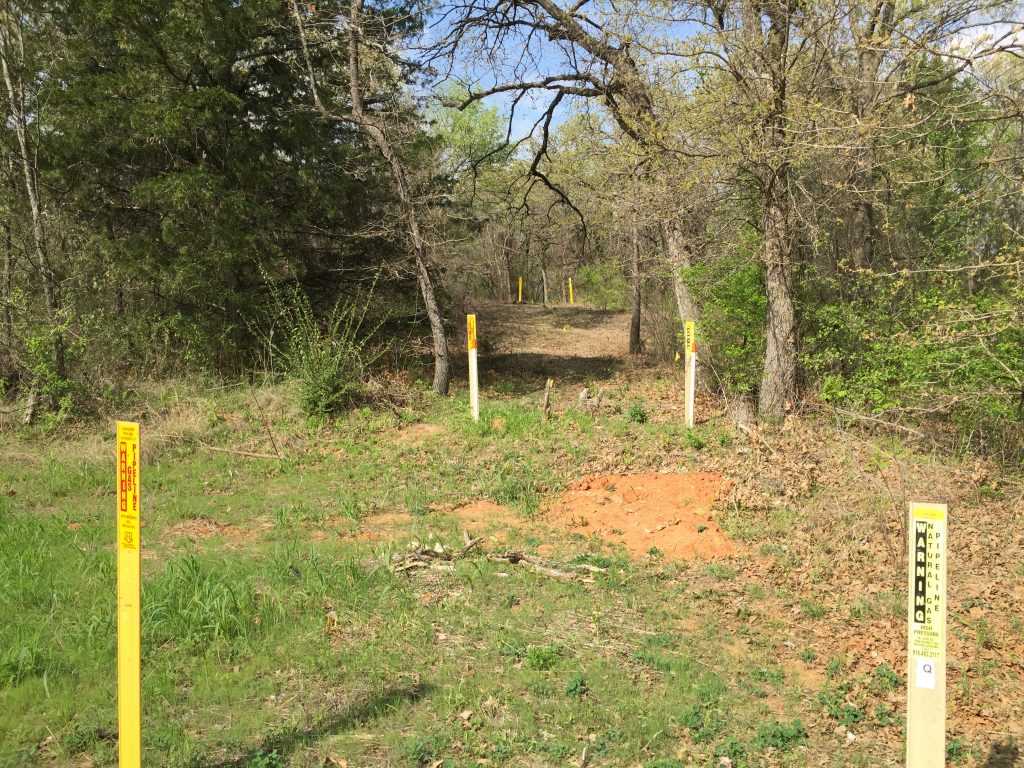
If you haven’t already, you can write in to officially register your opposition to BlueStone’s permit address via our Click N’Send feature. A hearing in Austin at the Railroad Commission offices has been set for May 25th and 26th…..
Raising the potential for earthquakes within distance of a large, important dam,
Potentially poisoning drinking water for a large chunk of the Metroplex,
Spills and accidents causing fish kills and other wildlife harms
Larger and larger emissions threatening breathers downwind,
Ignoring local ordinances and the rule of law,
There were already plenty of good reasons to oppose the BlueStone injection well. Now there’s another.
Texas’ Official Smog Denier Denied Spot on EPA Smog Committee
 You've probably have never heard of the EPA's Clean Air Scientific Advisory Committee but if you live in DFW or another "non-attainment" area for smog, you are governed by its judgment about what does, or does not, constitute a "safe" level of exposure to smog.
You've probably have never heard of the EPA's Clean Air Scientific Advisory Committee but if you live in DFW or another "non-attainment" area for smog, you are governed by its judgment about what does, or does not, constitute a "safe" level of exposure to smog.
The mission of the Committee is to periodically review the latest scientific literature on the subject of smog pollution and determine if the federal standard needs to be adjusted accordingly. Its members, all experts in their fields, serve as volunteers to advise the EPA. Although its recommendations are not automatically enforced, they carry a lot of weight and often determine when and by how much the standard will be changed.
Since 1991, based on wave after wave of studies on air pollution, the standard has been repeatedly revised downward, from a one-hour exposure level of 120 parts per billion to an eight-hour exposure level of 75 ppb currently, soon to come down to 70 ppb.
The original recommendation of the Committee this time around was for the standard to be lowered to between 65 and 70 ppb. The Obama Administration, after ungracefully backing-out of such a change prior to the 2012 election leading to the departure of then EPA chief Lisa Jackson, agreed to a 70 ppb standard last year. It's expected to be enforced at the beginning of the next decade.
Because of the volunteer nature of the job, there's always turnover on the Scientific Committee. This past year a new slot opened up and the EPA was taking nominations to fill it. Seeing an opportunity to put one of their own on the body, the Oil and Gas industry, as well as many others, supported none other than Texas Committee on Environmental Quality staff toxicologist Michael Honeycutt for the job.
This is akin to nominating Donald Trump to be a Sorority Mom.
Honeycutt has turned his office, never held by anyone particularly citizen-friendly before, into a shameless base camp for every industry fighting new environmental regulations of any kind. He is the go-to contrarian when independent scientists conclude new, lower levels of exposure to a poison are justified, whether it's Benzene, Arsenic or smog. Honeycutt never met a toxin he didn't want to shill for.
In the case of smog, Honeycutt hired Cambridge, Massachusetts-based Gradient Inc. at the tune of about $1 million in taxpayer money, to help him sell the idea that smog isn't that bad for you and a new lower standard for exposure was completely and utterly unnecessary to protect human health. Gradient has a impeccable reputation – for being Big Tobacco's bought and paid researchers whenever it needed somebody in a white coat to talk about how exaggerated the risks of smoking were.
Teaming-up, industry, Gradient and Honeycutt hit the road as EPA was mulling over a new ozone standard, spreading the gospel of smog denial. They mounted a campaign to block the EPA from implementing the 70ppb standard. They failed. But they weren't through.
For sheer gall, their next move can't be beat. When a slot on the smog standard-deciding Scientific Advisory Committee opened up, industry decided to nominate Honeycutt to the job. Who better to decide the level of harm the public should be exposed to than the guy who says there's nothing to worry about?
Honeycutt had the support of industry and its supporters in Congress. Oklahoma Senator Jim "Snowball" Inhofe is a big fan. How could he not get the job?
Alas, it might come as a shock, but the Obama EPA did not appoint Honeycutt to the position.
Instead, it decided to pick Donna Kenski, the data analysis director for the Lake Michigan Air Directors Consortium. for the open seat.
As you can imagine, the air is heavy with disappointment on Congress Ave in Austin and K Street in DC. Here's the reaction of one of industry's paid spokesmen, who coincidentally happens to be that same US Senator who backed him,
"It's disappointing EPA overlooked so many well-qualified candidates who would have brought much needed geographic diversity, fresh perspectives, and balance to the powerful CASAC panel," Sen. Jim Inhofe told ME in a statement. "The Obama-EPA has once again ignored established policies and public input on candidates and instead has hand-picked an ally to fill one of its last advisory appointments of this administration."
This is the kind of small, but important battle that takes place all the time in government. When you think about voting for president, the EPA's Scientific Advisory Committee is probably not the first thing you consider. But it makes a huge difference whether such a committee is headed up by real scientists, or junk scientists like Michael Honeycutt. Smog standards can save thousands of lives across the country every year. Those lives depend on the EPA using the best science, not the best science money can buy.
We Did It: After 15-Years of Persistent Organizing, Citizens Finally See Modern Controls on a Midlothian Cement Plant. And Now We Want It on All of Them
 Holcim is the first cement plant in the nation to voluntarily install an industrial catalytic converter called SCR on its smokestack, significantly cutting smog-forming air pollution in DFW.
Holcim is the first cement plant in the nation to voluntarily install an industrial catalytic converter called SCR on its smokestack, significantly cutting smog-forming air pollution in DFW.
But despite operating only 26 miles from EPA headquarters, the Agency and State of Texas still claim the technology isn't "feasible"
Downwinders is proud to announce Midlothian's Holcim cement plant is the first in the nation to voluntarily install pollution control equipment significantly cutting smog-forming air pollution, along with other dangerous emissions.
"Not many people may notice, but Friday is a big day for air breathers in DFW, as well as for everyone in the country who lives downwind of a cement plant," said Tamera Bounds, Chair of Downwinders at Risk, the clean air group that's been relentless in its pursuit of the technology for North Texas since 2001.
Friday marks the official deadline for Holcim's Midlothian cement plant to have its Selective Catalytic Reduction, or SCR system, up and running on one of its two giant kilns in order to be compliant with EPA emissions limits.
Although almost a dozen cement plants in Europe have installed the technology over the last twenty years and it's widespread in the American coal industry, Holcim is so far the only cement plant in the U.S. to install SCR on one of its kilns without a government mandate.
A pilot test using SCR at Midwest cement plant was required by a Department of Justice enforcement action in 2010. Results show smog-forming pollution was cut by at least 80% – roughly twice as much as pollution controls now in use in the US, including Midlothian. In Europe, SCR has a track record of removing 80-90% or more of the smog-forming pollution that has kept DFW in violation of the Clean Air Act since 1991. It also cuts the emissions of air toxics, particulate matter, and dioxins by double-digits.
With three cement plants and four kilns, Midlothian hosts the largest concentration of cement manufacturing in the US, and the largest "stationary" sources of air pollution in DFW. Since the late 1980's, the city has become a national battleground over cement plant pollution. First, over the use of hazardous waste as "fuel" for the local kilns, then over the closing of dirtier, obsolete "wet" kilns contributing to smog and climate change, and now over how fast new kilns can be updated to reflect 21st technology. 
Bounds and others say the installation of SCR on all four kilns in Midlothian would mean a huge benefit to public health for residents in Tarrant County, where the predominant winds push the plumes from the kilns. A 2009 Cook Children's Hospital study showed childhood asthma levels highest directly downwind of the cement kilns.
The demand for the technology is a central part of the group's push to replace the current State-sponsored anti-smog plan with a more effective, and protective, one from EPA. So far, Dallas County, the City of Dallas, two Congressional Representatives and a State Legislator agree with them. But incredibly, the Agency maintains the SCR technology Holcim has freely invested in to reduce pollution and is already operating less than 30 miles from its regional headquarters is not "technically feasible."
Downwinders and other groups in the DFW Clean Air Network regional alliance are challenging EPA's refusal to recognize a game-changing pollution control technology that could help DFW finally put its smog problems behind it a well as offering similar help to other parts of the country downwind of cement plants.
"It's rare these days to find the EPA embracing Texas' approach to ignoring advances in environmental science, but that's exactly what happening," said Bounds. "Both State and EPA officials are acting like 3rd Graders – closing their eyes and humming loudly, pretending this time-tested technology isn't operating right in front of them. But it does, and it's here to stay."
Bounds wants the EPA to take note of the cuts in pollution triggered by Holcim's operation of its SCR system and then hold ALL the Midlothian plants to the same modern standard. "You have a piece of equipment that is setting a higher bar for pollution control. Every cement kiln in DFW should have to meet that higher bar now. No other anti-pollution strategy makes sense."
It's been a long and circuitous route to getting SCR installed in a Midlothian cement kiln. Along the way, the region's clean air activists moved the entire nation closer to widespread use of this control technology.
North Texans first heard about the use of SCR in the cement industry through a citizens group fighting a proposed new cement plant in New York state in 2001.They'd commissioned a study from a NYC engineering firm identifying European cement plants that had already successfully installed the technology.
Downwinders tried and failed to include SCR in the anti-smog plan in 2003. It then used a 2005 settlement agreement with the State over the failure of that plan to get the then Rick Perry-controlled Texas Commission on Environmental Quality to perform an independent assessment of the technology. That landmark study produced results that are still reverberating today. In it, five independent experts chosen by Downwinders, the cement industry, and the State declared SCR to be ready for prime time.
"SCR is a commercially available technology. It offers the possibility of significant NOx reduction at the plants in Ellis County. As an 'add on' technology, which can achieve 90% or greater NOx reduction, with demonstrated performance at hundreds of coal fired power plants, SCR is a viable technology that is available for both dry and wet kilns."
That conclusion, from cement industry experts, in a TCEQ study, is now a decade old.
At the same time they were working to bring SCR to Midlothian, Downwinders also led the fight for new EPA emission limits on cement kilns that burn hazardous waste. A 2009 national hearing at DFW Airport attracted over 200 people. Those emission limits clamped down on air toxics. Holcim couldn't meet them without adding controls. They choose an SCR unit on one kiln and a thermal oxidizer (re: flame) on the other to try and stay in compliance. Even though Holcim installed SCR to address air toxics, or Volatile Organic Compounds and not smog pollution, the effect on emissions will be the same.
Meanwhile, the 2006 TCEQ study and subsequent push by Downwinders for SCR in Midlothian helped persuade the EPA to require the pilot test in 2010. That test, as well as Holcim's experience in Europe, set the stage for SCR's official debut on the Texas prairie on Friday.
"It's been a long fight, but change is hard," said Bounds, "and it doesn't happen in a straight line."
Help Us Celebrate This Victory That Was 15 Years in the Making
Please consider contributing $25 or more on "GIVING DAY" NEXT THURSDAY to keep us on the front lines of change another 15 years.
Giving Day is an all day online giving event sponsored by the Communities Foundation of Texas.
Downwinders will have our own online Giving Day page where you can click and give from 6 am through 12 Midnight next Thursday.
Every contribution of $25 or more is matched or extended by the Foundation.
This year, we need your support to keep our full-time staff in the field, as well as fund our 2nd annual Root and Branch Revue for activists, and assemble our North Texas Clean Air Forceof air-monitoring drones.
Oh yeah, we're also opening a school for organizers in January.
We're based in DFW. All our board members are from DFW. Our priority is DFW air. Your contribution stays in North Texas to fund the fight for clean air in North Texas.
We know you're being assaulted by Giving Day appeals from all the local non-profits, and there are lots and lots of good causes. We only request that you ask yourself how many other local groups can repeatedly pull off meaningful victories with so few resources?
We were able to bring SCR to Midlothian with your help. We need your help again next Thursday. We think we've earned it.
Thanks.
“Meet the Drones” Mixer Oct 6th
Thursday, October 6th
5:00 to 6:30 pm
TCU Alumni Center
2820 Stadium Dr
Fort Worth
Have a bite to eat, a drink, and stroll amongst the drones we're assembling for our North Texas Clean Air Force.
Representatives from the University of Texas at Dallas will be displaying their fleet of fixed-wing and rotor copter drones. TCU, UTA, UNT and the UNT Health Science Center have all been invited to set up displays and show-off their high-tech capabilities as well.
Chat with our academic parterns in grassroots air monitoring and watch as a certified drone pilot demonstrates the new technology we're using to fight for cleaner air.
This should be of interest to anyone looking for Do-It-Yourself ways to monitor the air we breathe as well as Downwinders supporters in general. We're adding a high-tech tool to our tool box and we want you to see how we're spending your contributions. Support a citizens' North Texas Clean Air Force.
Chris Turner Becomes First State Representative to Ask EPA for new DFW Air Plan
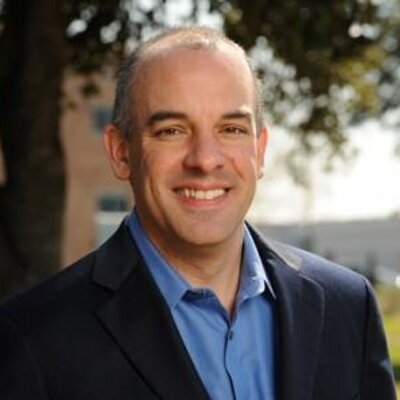 State Representative Chris Turner, whose District 101 spans west Grand Prairie and east Arlington between Dallas and Fort Worth became the first state elected official to urge EPA to reject the current state anti-smog plan for DFW and substitute one of its own.
State Representative Chris Turner, whose District 101 spans west Grand Prairie and east Arlington between Dallas and Fort Worth became the first state elected official to urge EPA to reject the current state anti-smog plan for DFW and substitute one of its own.
In a letter to EPA Chief Gina McCarthy, Turner used language echoing the sentiments of US Congresswoman Eddie Bernice Johnson and Congressman Marc Veasey.
"While I hope that the TCEQ will take the public comments it received by EPA, the Texas Medical Association, and others into consideration and require additional emissions controls in the final SIP revision it submits to EPA, I ask you to consider rejecting the state's plan use of a Federal Implementation Plan if your agency decides that the final SIP revision is insufficient and the state will not negotiate in good faith."
The entire letter can be read here.
Besides Johnson and Veasey's letters, Dallas County and the City of Dallas have voted in favor of resolutions condemning the currently proposed plan has being inadequate. More cities and counties are expected to pass similar resolutions as elected bodies come back from summer breaks.
Members of the DFW Clean Air Network (DFW CAN) – Downwinders at Risk, the Sierra Club, Beyond Coal, the Texas Campaign for the Environment, Mansfield Gas Well Awareness and Livable Arlington – are also out and about obtaining letters like Turner's from other state and federal elected officials.
Turner's district is directly downwind of the Midlothian cement plants and includes numerous natural gas wells and facilities. Gas sources are now the fourth largest contributor to DFW smog.
According to EPA, the state plan arrived at the EPA's doorstep August 8th, but it's already DOA.
Although ozone season is far from over and it's been a relatively mild "season" so far, we know in its second full year out of the three years allotted for success, the state air plan will, at best, have brought down ozone levels by 1 ppb from 2015 levels, to 80 ppb. We're supposed to be at 75.
The parrot is dead. We're just waiting for the state to admit it – or the EPA to shut the farce down.
Meanwhile, the more political support on the ground in DFW for an EPA alternative that might actually reduce emissions from major sources in North Texas like gas, cement kilns, and coal plants, the more likely it is for the Agency to accept the challenge, and endure all the pushback from Austin it'll get if it decides to take over the job.
If you're interested in trying to get your city, county, or state or federal elected officials to join the band wagon and reject the state plan, write or call us and we'll work with you in getting something accomplished that can add to the momentum.
Testify! Stop Getting Railroaded by the RRC
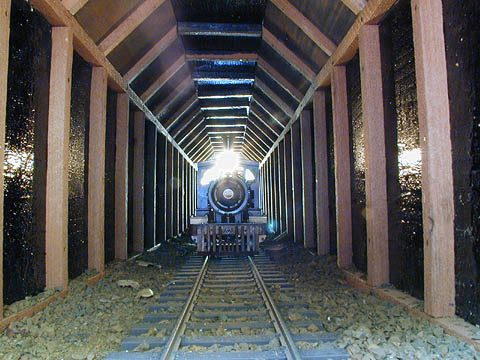 There's no better symbol of the anachronism that is Texas state government than the ineptly named Railroad Commission, or RRC. It has nothing to do with choo-choos, and everything to do with the State's oil and gas legacy.
There's no better symbol of the anachronism that is Texas state government than the ineptly named Railroad Commission, or RRC. It has nothing to do with choo-choos, and everything to do with the State's oil and gas legacy.
Or is it misnamed? Its innocuous title keeps it off a lot of citizens' radar screens while going about its business of shoving anyone or anything not in the oil and gas business around to make it more comfortable. Our drilling contaminating your water? You can to get the bottled stuff delivered. Our waste disposal causing earthquakes? You'll get used to it. Our air pollution causing your child's nosebleed? What's a couple of ER visits compared to our nation's energy security? Railroad? Yes – it's right there in our name.
Instead of being appointed by the Governor, the three RRC commissioners are elected statewide…with the help of contributions from the oil and gas industry. This isn't the fox guarding the hen house. There are no hens left.
This is why any review of the Commission, even one by the equally inept State Legislature, is a chance to get the word out about how god-awful the RRC is and what needs to be done to overhaul it. Beginning this month, that's what's happening, because 2017 is the year the Railroad Commission is getting "sunsetted" by the state.
Sunset laws demand that every state agency must come before the legislature and justify itself anew about every 12 years. Usually pro forma exercises, occasionally a terrible agency is allowed to die. Most have their missions amended or rules tweaked, or their names changed. this is how the "Texas Natural Resources Conservation Commission," or, "TNRCC/"TRAINWRECK," became the "Texas Commission on Environmental Quality/"TCEK." After being postponed last session, it's the Railroad Commission's turn now.
Tomorrow night's faux-official Town Hall meeting on the Railroad Commission being sponsored by Earthworks, Public Citizen and the Sierra Club is a kind of milk run for the more important job of testifying in front of state legislators in Austin later in the month, on the 22nd. Attend to find out how you can use this process to gain more publicity for its terrible record, and perhaps be able to actaully tweak the system to be more citizen-friendly.
Texas Railroad Commission Town Hall
Tuesday, August 2
Grapevine Convention Center
1209 Main St.
(located off 114 and Main St. exit)
Registration: 6:30 pm
Program: 7:00 pm
Texas Railroad Commission Public Testimony at the Capitol
Monday, August 22
For more information on the whole process, talk to Rita Beving with Public Citizen and the Sierra Club, 214.557.2271
We Already Know the State Air Plan for DFW has Failed a Second Year In a Row. The Only Question is By How Much.
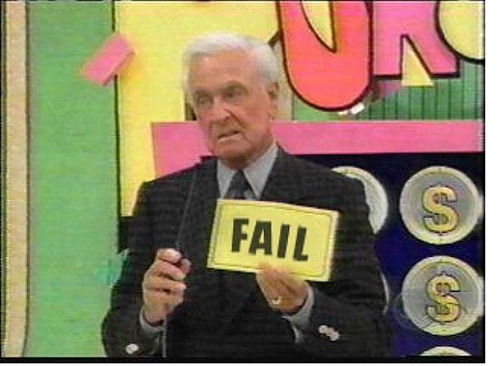 It's only July, but midway through its second year, we already know the state's air "plan" for DFW has once again failed to obtain compliance with the current 75 parts per billion ozone standard.
It's only July, but midway through its second year, we already know the state's air "plan" for DFW has once again failed to obtain compliance with the current 75 parts per billion ozone standard.
Last year the regional peak went from 80 to 81 ppb based on a rolling three-year average of readings from the Denton monitor. Even though we've only had one or two awful ozone weeks this year so far, those were enough to establish a 2016 Denton monitor average of 80 ppb going into what are tradtionally the smoggier months of August and September. So two years in, the state's plan can do no better than get us back to where we started in 2014 – and might do considerably worse.
Officially, the state's only hope for last-minute success is a drastic drop in smog at the Denton monitor next year in order to swing the three-year running average. Those hopes are hanging by a tailpipe with the scheduled introduction by the federal governement next summer of a new, lower-sulfur gasoline mixture for all U.S. cars and trucks. Austin's "plan," such as it is, is to ride the coattails of that change in gasoline formula in hopes its widespread use will significantly lower smog numbers thoughout DFW.
EPA agrees with Texas that they'll be a decline in vehicle-generated smog due to the new gas mix. However, it disagrees that it alone will be able to bring DFW into compliance with the Clean Air Act by the end of ozone season in 2017. At this point, the Denton monitor would have to have a 2017 fourth-highest reading of 64 ppb or lower to come in at a running average of 75 ppb. Not impossible, but it requires an unprecedented 10-11 ppb annual drop from the current average, much less the higher one that August or September might deliver.
The state can keep saying the clock is still ticking on their plan, but the numbers are already in, and they aren't cooperating.
This kind of math is the reason why Downwinders, the Sierra Club and other groups are requesting EPA to reject the state plan that now has arrived at its doorstep. It's the reason both Dallas County and the City of Dallas passed resolutions requesting the same, and the reason why both Congresswoman Eddie Bernice Johnson and Congressman Marc Veasey wrote a letter directly to EPA asking that the agency step in and do the job the state will not do.
Rejection of the bad state plan is the necessary first step in setting the stage for a more comprehensive EPA plan – one that would include all the large sources of smog pollution affecting DFW that have been untouched by state air plans over the last decade: like the oil and gas industry, the Midlothian cement kilns, and the East Texas coal plants.
We're tired of failure. We've experienced 25 years of it. We're experiencing it again this year. If you're tired of dirty air too, please contact us about how your city and county can pass a resolution asking the EPA to reject the state's plan and start writing one that will actually work.
Downwind in Switzerland: “Do you carry responsibly-sourced concrete?”
(Half of these people represent industry. Half are environmentalists. Can't tell which ones? That's a good thing.)
Should a bag of concrete be like an organic banana or a new chair made out of recycled wood and get "certified" as being responsibly-sourced, or "sustainable?" And if so, what's the criteria for making such a judgment, and who's making it?
Those are the complicated questions at the heart of a new worldwide initiative by the concrete/cement industry to come up with a way to sell its products in a more environmentally-friendly way.
After a couple of years of working on a scoring scheme, the mostly European-based intra-company group (LaFarge/Holcim, Heidelburg, CEMEX) charged with designing the system was ready to unveil it to the international environmental community for the first time in mid-July at a small meeting in Gland, Switzerland, headquarters of the International Union for the Conservation of Nature, whose staff facilitated the review process. IUCN had performed the same function for the aluminum industry when it went through a similar "green" self-examination.
Nine different environmental groups from at least seven different countries (Britain, Bulgaria, China, India, Lebanon, Switzerland) spent three days assessing and critiquing the industry's proposal – including the lone representative from the U.S., Downwinders at Risk's Jim Schermbeck. Participants not only met during the day, but ate together, and stayed in the same lone hotel in the small, outlying suburb of Geneva. Inside the meeting room, discussions were often frank, funny, and awkward. Outside, conversations ran the gamut, from architecture, to vacation trips, to Texas BBQ.
It's not a surprise that the concrete/cement business wants its relatively messy business to be seen through green-tinted glasses. Old timers will recall the burning of hazardous waste in Midlothian cement plants was relabeled "recycling" in the 1980's and 90's.
But this time around, the pressure is not necessarily to greenwash the transformation of a cement kiln into a waste incinerator, but to give an environmental patina to the final product, concrete, so that it can compete in the marketplace with building materials that already have their own green certification schemes up and running.
In other words, there appears to be new market pressure on the industry to "go green." Wood and Aluminum all now have their own systems for doing so. Concrete/Cement is lagging behind because it can't point to such a system. They want everyone from a construction site manager to a do-it-yourselfer to ask for "certified concrete" in the same way customers want wood that wasn't cut from a rainforest habitat, and aluminum made with Bauxite that wasn't mined at the expense of indigenous peoples.
Congratulations. Consumer demand for green products is so great that even the conservative cement/concrete industry feels the need to respond.
But that's also not news to North Texans. Certainly one reason Downwinders had a seat at the table in Switzerland was our pioneering Green Cement campaign of 2006-2011 which used government procurement policies to reward less polluting Midlothian cement kilns and punish the dirtier plants. That was the first time the marketplace for cement had been used toward greener ends in the US.
While that local effort looked exclusively at the differences in air pollution impacts from the Midlothian cement kilns, this new initiative starts at the limestone quarry, includes the aggregate industry (sand and gravel) goes through the cement kiln, and then continues all the way to the concrete batch plant and the bag of Sakrete at the store. It looks at impacts to water supply and quality, air quality, energy use, climate change, and local populations at each of these stops along the product cycle.
Much of the energy behind the initiative seems to come from a new generation of European industry representatives who've grown up with a different sensibility that takes green values for granted. More than one environmentalist noted a more open and questioning tone to the back and forth conversations. Whether this new attitude can be sustained and allowed to flow into real policy changes, is of course, the acid test of this first round, which must be finished for a pitch to the CEOs of the major industry players in December. Apparently the bosses are not entirely sold on the idea of needing such a certification at all, and, at times the whole idea had the air of being a kind of end-run around the Establishment by some Young Turks, albeit, corporately-backed.
And there are some very large challenges that could sabotage any good intentions, primarily, the continued reliance on burning wastes for the substantial fuel needs of a cement kiln. As much as kilns have modernized, making cement still involves cooking rock at very high temperatures provided by a very hot, continuous flame. Something has to fuel that flame day after day, year after year. Just buying the fuel for that flame represents as much as 60% of the operating costs of a cement plant.
This is why companies are always looking for ways to cut those energy costs: by turning themselves into incinerators and charging generators to burn their toxic wastes, by getting subsidies from government to burn wastes like tires, by getting refuse from other industries which would otherwise have to pay to have them hauled away. In terms of large PR problems, none loom larger than the inherent one that goes with the introduction of burning wastes in the local kiln. That's how Downwinders got our start.
But because of the volume of fuel needed as well as the required high temperatures, there are only so many kinds of things a kiln can practically burn. Midlothian kilns began by burning natural gas. If you're only looking at the end result of the flame, and not how the gas got here, it's still probably the cleanest source of fuel. Then there's coal, which is a no-go fuel in 2016 for all kinds of reasons. After that you get to wastes. Even if it doesn't have a permit to burn "hazardous" wastes, a kiln still can burn things like carpet pieces, plastics, shingles, and car "fluff." These are all materials that can release toxic air pollution when burned. Finally there's biomass – wood refuse, agricultural waste, or fuel crops themselves like sawgrass. Originally supported universally by environmentalists, these choices now have climate consequences that make them less desirable.
These are not easy choices for industry….or environmentalists. Schermbeck made the offer to industry to sit down and work on an agreed "hierarchy" of wastes that would establish minimum high BTU value and low toxicity levels, as the group had done over a decade ago with TXI in a private mediation process that never panned out, but showed vast differences in fuel characteristics. At last word, the offer was being mulled over by industry along with all the other suggestions made by environmentalists. By October we should know how first round of assessment has changed the scheme – or not. Then another round of feedback from the environmental community, and a final decision by the end of the year.
At stake is the potential to connect environmental progress and profit-making within one of the most environmentally-disruptive industries around. To establish performance floors, raise best practices, set new precedents. There are large risks and opportunities for both sides.
Besides being close to the corporate headquarters of most of the major companies invovled, and home of the IUCN, Switizerland seemed the appropriate place for this first-time gathering for another reason. At the end, everyone arrived at as if on the edge of a metaphorical mountain precipice with a sizable, but not insurmountable gap separating where the industry is now, from where it needed to be. Whether that gap can be bridged any time soon remains to be seen. But the meeting in Gland was a good keystone to put in place for any future span designed for the job.
Holy Gas Mask! Dallas City Council Finds Rare Unanimity, Votes 15-0 for Cleaner Air. Thank You
 Was it something in the air? Or maybe your emails in their mailboxes?
Was it something in the air? Or maybe your emails in their mailboxes?
Sandy Greyson, supported by a citizens army, pulled off the unthinkable and delivered a rousing 15-0 endorsement from the Dallas City Council for her resolution calling for a better smog clean-up plan for DFW than the one the state is currently pursuing.
Despite last-minute objections from coal plant operator Luminant and the Oil and Gas industry lobbying groups, Greyson wrangled the entire city council into agreeing the region can do better than a hands-off approach to major industrial polluters. Dallas County voted in support of a similar resolution in May.
It wasn't quite lions laying down with lambs, but it was close. She secured the votes of stalwart green council members Scott Griggs, Philip Kingston, and Adam Medrono, as well as council conservatives Jenifer Staubach-Gates, Lee Kleinman, Rickey Callahan, and Adam McGough. Southern Dallas members found common ground with their North Dallas peers. Trinity toll road opponents and supporters who don't even speak to each other all spoke in praise of Greyson and the resolution.
It wasn't just the final tally, as impressive an accomplishment as that is, that was shocking. It was all the different succinct points of view used to justify the resolution's passage. Philip Kingston berated the Texas Commission on Environmental Quality (TCEQ) for having morphed into an Orwellian institution, where "Freedom is Slavery, and Smog is Clean AIr." Lee Kleinman cited conservative economic principles to conclude "when a business takes clean air and makes it dirty, it should pay." Carolyn Arnold spoke to her disillusionment with the state over the Columbia meat-packing facility. Jenifer Staubach-Gates' decision was informed by her background as a school nurse.
As the last speaker before the historic vote, Mayor Mike Rawlings gave as good a summary of the tough position the current state strategy is putting local governments as you will hear. Dallas is stuck in the middle of "a game of chicken" between an inadequate plan from Austin and the requirements of the Clean Air Act. And the intent of the resolution is to put an end to that game and get serious about developing a practical cost-effective way to get clean air. It was the discussion's drop-the-mic moment.
There was also a marked diversity among citizens showing-up at City Hall to speak in favor of the resolution. Latino, black and white citizens joined ranks. Usual suspects Sierra Club, Texas Campaign for the Environment, and Downwinders at Risk, were joined by Mansfield Gas Well Awareness, as well new neighborhood group, West Dallas 1. Despite pre-vote visits and letters, no opponents of the resolution signed-up to speak.
If you ever doubted your emails to city council have an impact, this vote is proof-positive they do. Mayor Rawlings described the campaign leading up to the resolution's passage as a "textbook example" of how citizens and policymakers can craft progress on important issues, specifically calling out the hundreds of emails he and the rest of the council received, and the methodical process supporters pursued.
Thank you to everyone who took the time to send an email or make or call. You helped make this good thing happen. Everyone gets an "A" in Citizenship this month.
A win in the non-attainment area's largest city would have given the proponents of a new air plan confidence going into other North Texas communities in search of similar resolutions. A 15-0 vote from Dallas turbocharges that effort. This is a strong signal that local governments need to act, regardless of ideology, to protect their own self interests. It will be heard throughout the region by other Mayors and elected officials.
Where do we go next? Good question. Local officials are talking amongst themselves to decide where similar resolutions should be introduced next, but let us know if you're interested in helping us pass one in your city or county.
And, look, if you think this was a worthwhile thing, that we made some kind of progress today, then won't you please consider dropping $25 or more in the tip jar?
We win these victories with scant resources, that are, frankly, scantier these days. We want to keep rolling. Help us keep the wheels greased. DONATE HERE.
Thanks. Onward thru the smog.

